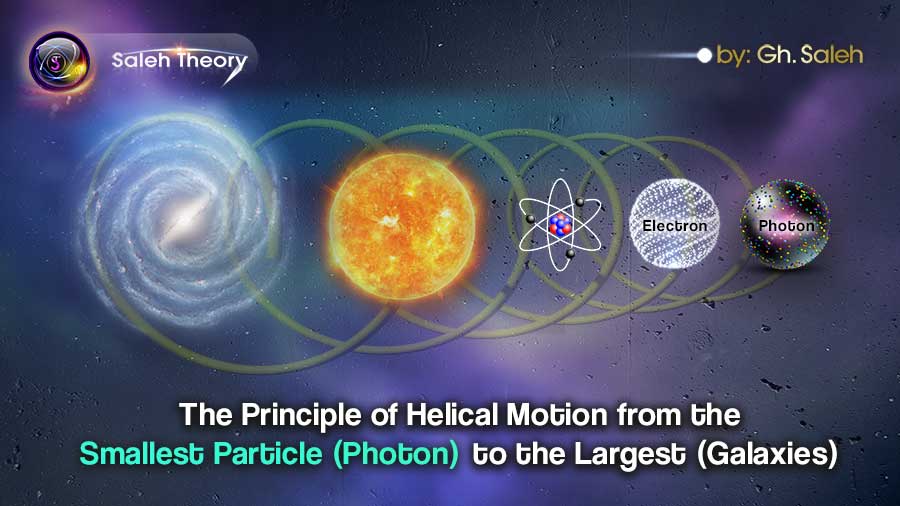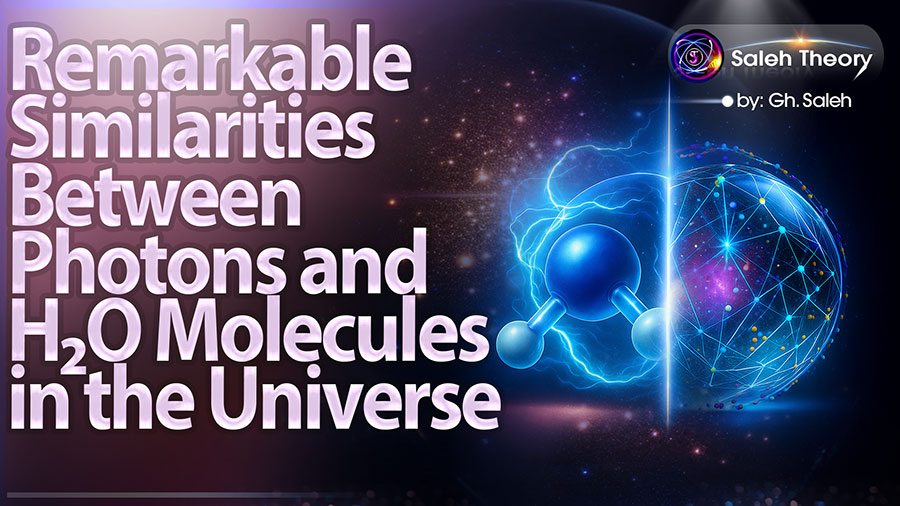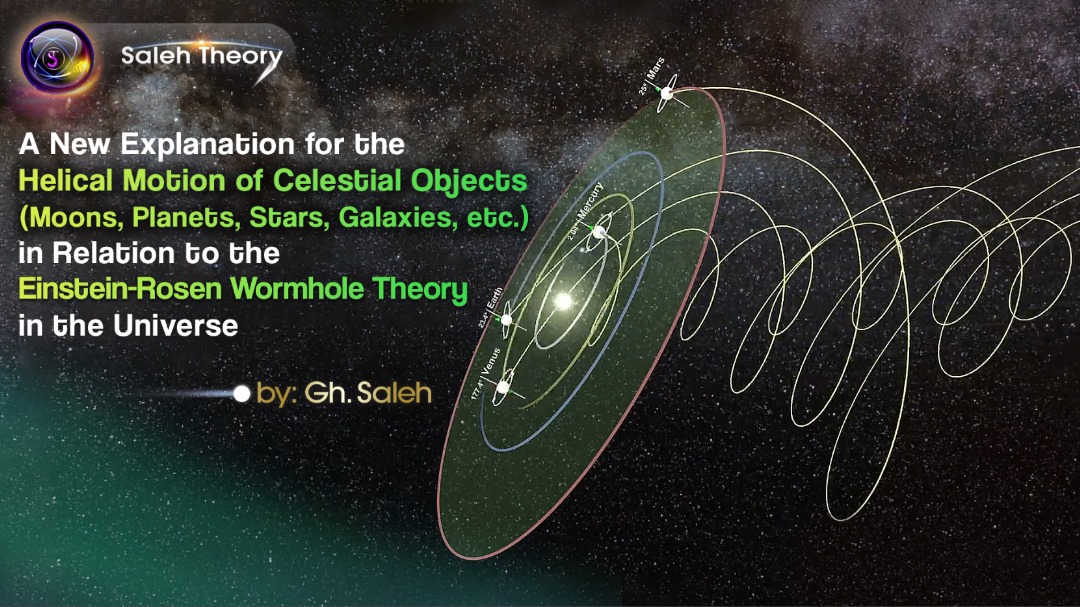
The Principle of Helical Motion from the Smallest Particle (Photon) to the Largest (Galaxies)
One of the most fundamental characteristics of nature is the eternal motion of all its components. No physical entity in the entire universe, from the smallest particles to the largest galaxies, is in a state of absolute rest. Observational and theoretical studies demonstrate that these motions are often helical in nature, which means linear motion is always accompanied by a rotational component.
At the microscopic scale, photons, as the building blocks of the universe, not only emit linearly at the speed of light but also have a rotational component due to the spin of the electron that produces them. Consequently, the resulting motion of photons can be described as a helical motion.
This same characteristic is observable for electrons and other charged particles. For example, an electron that separates from an atom has a combination of linear and rotational motion, due to both its inherent spin and its orbital movement around the nucleus. This results in its final trajectory taking the shape of a helical motion.
On a larger scale, the same pattern is repeated in astronomical systems. The moon not only rotates around the Earth but also moves around the sun in a helical orbit. The Earth, in addition to its elliptical orbit around the sun, travels along with the sun in the spiral arm of the Milky Way galaxy, and thus, its path in space takes on a multi-layered, helical shape. Similarly, the sun, in addition to its orbital motion around the central black hole of the galaxy, moves with the entire galaxy in larger orbits around bigger galaxies, so its motion is also helical in nature.
At the galactic scale, the spiral arms, the rotation of stellar disks, and the translational motion of entire galaxies in larger clusters are all evidence of this pattern. In other words, just as it's observed in the microscopic world of fundamental particles, movements are inherently helical at the macroscopic cosmic scales as well.
Therefore, we can conclude that the principle of helical motion is a fundamental and universal rule present at all levels of matter. This principle not only establishes a deep connection between the dynamics of fundamental particles and cosmic movements but also may open new horizons for the formation of unified theories in physics and cosmology.
References:
[1] Saleh, Gh. "A New Explanation for the Helical Motion of Galaxies Based on a Hubble Telescope Image (Observer's View) in the Universe." Saleh Theory, 01 Sep. 2025, https://saleh-theory.com/article/a-new-explanation-for-the-helical-motion-of-galaxies-based-on-a-hubble-telescope-image-observers-view-in-the-universe
[2] Saleh, Gh. "10 Identical Characteristics in the Motion of Objects, From the Smallest (Photons) to the Largest (Galaxies)." Saleh Theory, 12 Jul. 2025, https://saleh-theory.com/article/10-identical-characteristics-in-the-motion-of-objects-from-the-smallest-photons-to-the-largest-galaxies
[3] Saleh, Gh. "10 Permanent, Constant and Common Principles of Motion Among the Smallest Particles (Photons, Electrons, etc.) and the Largest Objects (Moons, Planets, Stars, Black Holes, etc.) in the Universe." Saleh Theory, 11 May 2025, https://saleh-theory.com/article/10-permanent-constant-and-common-principles-of-motion-among-the-smallest-particles-photons-electrons-etc-and-the-largest-objects-moons-planets-stars-black-holes-etc-in-the-universe
[7] Saleh, Gh. "A New Explanation for the Repeating Nested Helical Path of Motion from the Smallest Particles of Existence, Photons, to Moons, Planets, Stars, Galaxies, etc.!." Saleh Theory, 15 Jul. 2023, https://saleh-theory.com/article/a-new-explanation-for-the-repeating-nested-helical-path-of-motion-from-the-smallest-particles-of-existence-photons-to-moons-planets-stars-galaxies-etc
[8] Saleh, Gh. "The Principle of Complex Helical Motion, From Photon to Planets, Stars, Galaxies, … in the Universe." Saleh Theory, 13 May 2023, https://saleh-theory.com/article/the-principle-of-complex-helical-motion-from-photon-to-planets-stars-galaxies-in-the-universe
 Download PDF
Download PDF 

